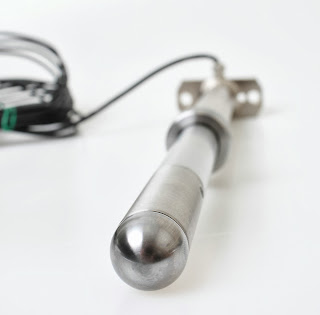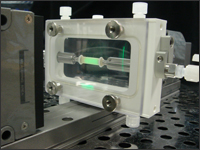Brief introduction into some of the changes and updates to both the ISO 6892-1 and ASTM E8/8M tensile testing standards for metals and ambient temperature.
Read more

Share your ideas. Tell us your stories. Join the Instron Community.

| We've created a Year in Review to highlight exciting moments of 2013. We want to keep you up to date on all aspects of Instron® – from our community relations to our acquisitions to available webinars, and new products. There was never a dull moment or a period of time when we weren’t aiming to meet the expectations and needs of our customers. Every experience you have with Instron is invaluable to us as a company. Specifically within TechNotes, I work with our application engineers and product managers to bring you the most relevant and industry-specific news that will assist with your testing applications. Instron professionals are some of the best in the industry and hold seats on many of the ASTM and ISO committees. It’s my goal to share with you their knowledge and experience in order to better support your testing applications. So keep the feedback and questions coming! I welcome any chance I have to speak with you on ways to better communicate just exactly what you’d like to hear. Thank you for your continued support as we move forward into 2014 and I look forward to future communications with you! Best regards, Denise Czerpak TechNotes Editor |
|



 Anna Wynn will be at the RX for Success exhibit at International Museum of Surgical Science (IMSS) in Chicago on December 5th, demonstrating the LigaGen L30-4c bioreactor instrument. This exhibit is focused on introducing and
educating students on cutting-edge technology in bioengineering and the health
care industry. The exhibit will be hosted by the Museum of Surgical Science and
shared through both museum events and traveling exhibit venues.
Read more
Anna Wynn will be at the RX for Success exhibit at International Museum of Surgical Science (IMSS) in Chicago on December 5th, demonstrating the LigaGen L30-4c bioreactor instrument. This exhibit is focused on introducing and
educating students on cutting-edge technology in bioengineering and the health
care industry. The exhibit will be hosted by the Museum of Surgical Science and
shared through both museum events and traveling exhibit venues.
Read more




 As a starting point for this response, the 1,800 J is the impact energy that your drop tower is capable of reaching. Selection of which tup to use does not have as much to do with the impact energy as it does with the way that the sample being hit reacts to the impact.
As a starting point for this response, the 1,800 J is the impact energy that your drop tower is capable of reaching. Selection of which tup to use does not have as much to do with the impact energy as it does with the way that the sample being hit reacts to the impact.

 Tissue Engineering and Regenerative Medicine therapies are seeking to abolish this question. Researchers around the globe are developing new scaffolds (materials on which to grow cells), identifying appropriate cell lines to use for specific tissues, and perfecting the recipe for putting the two together to grow new tissues and organs for transplant. Instron is a part of this recipe. Our mechanical systems and bioreactor chambers provide a controlled environment to develop new tissues and organs. The bioreactor chamber provides a closed, sterile location to house the sample; while the mechanical forces can be used to send mechanical cues to the cells to assist with differentiation, characterize native tissue and scaffolds, or evaluate tissue engineered products. Read our TERM (Tissue Engineering & Regenerative Medicine) Update to learn more about Instron's activity in this market. Stay tuned for more application updates.
Tissue Engineering and Regenerative Medicine therapies are seeking to abolish this question. Researchers around the globe are developing new scaffolds (materials on which to grow cells), identifying appropriate cell lines to use for specific tissues, and perfecting the recipe for putting the two together to grow new tissues and organs for transplant. Instron is a part of this recipe. Our mechanical systems and bioreactor chambers provide a controlled environment to develop new tissues and organs. The bioreactor chamber provides a closed, sterile location to house the sample; while the mechanical forces can be used to send mechanical cues to the cells to assist with differentiation, characterize native tissue and scaffolds, or evaluate tissue engineered products. Read our TERM (Tissue Engineering & Regenerative Medicine) Update to learn more about Instron's activity in this market. Stay tuned for more application updates.


















 At the Worldwide Headquarters, Instron received the Cornerstone Award for superior volunteerism in addition to the Most Improved Business Campaign Award for the third year in a row. Where Instron’s Industrial Products Group was recognized with the Platinum Award, the highest level of recognition for donations for the second year in a row, the Instron Binghamton (NY) Facility was praised for its leadership.
At the Worldwide Headquarters, Instron received the Cornerstone Award for superior volunteerism in addition to the Most Improved Business Campaign Award for the third year in a row. Where Instron’s Industrial Products Group was recognized with the Platinum Award, the highest level of recognition for donations for the second year in a row, the Instron Binghamton (NY) Facility was praised for its leadership.









